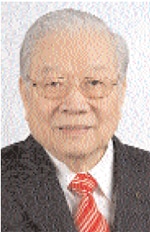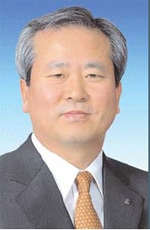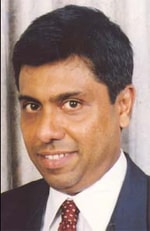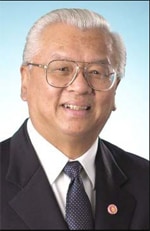ASIA
The HSBC Group continues to forge ahead in Asias emerging markets. Primarily through its Hong Kong based subsidiary, Hong Kong and Shanghai Banking Corporation, it has built a presence in a number of key countries. Its principle focus is on India, Indonesia, Korea,Taiwan and Thailand, as well as the more developed markets of Singapore and Hong Kong. Last year it established five new branches in the regionone in Bangladesh and four in India.The group boasts 685 offices throughout the Asia-Pacific region.
HSBC last year became the first foreign bank to launch a Shariah banking service in Indonesia. It also won approval to launch an Islamic banking service in Bangladesh.
The group continues to make significant inroads into mainland China. Its subsidiary, Hang Seng Bank, signed an agreement last year to acquire a 15.98% stake in Industrial Bank, becoming the first foreign bank to acquire more than 15% of a mainland Chinese bank. Meanwhile, the Hongkong and Shanghai Banking Corporation entered into an agreement to acquire 50% of Fujian Asia Bank, a Chinese-foreign equity joint venture bank, at the end of December.
In 2003 the HSBC Group posted a pre-tax profit of $12.8 billion, up 33% from $9.7 billion in 2002. Hong Kong accounted for 25.9% of the earnings, with the rest of the Asia-Pacific constituting 9.9%.
S. K. Green, group chief executive
www.hsbc.com
BANGLADESH
Islami Bank Bangladesh
While Bangladeshs state banks continue to struggle with the challenge of ongoing reforms, a number of its private commercial banks are doing rather well. Of these, Islami Bank stands out, boasting a further 38% increase in profit last year, to 2.2 billion takas ($37 million). A private commercial bank based on the Islamic Shariah, the bank has managed to increase its business while ensuring a higher spread between lending and deposit rates. Last year it reported an increase in total assets, to 134.7 billion takas, from 80.9 billion takas in 2002. Deposits increased to 70.5 billion takas, from 56.2 billion takas the preceding year. The bank also enjoyed a rise in export-import business. Islami Bank provides extensive customer service and continues to increase its branchesto 141 last year compared to 128 in 2002 in the wake of strong demand.
Abdur Raquib, executive president
www.islamibankbd.com
CHINA
Bank of China

|
|
president, Bank of China |
Chinas banks are problematic: Despite significant reforms, they sustain a high ratio of non-performing loans and low capital adequacy. Nevertheless, Bank of China stands out for its reforms. In 2002 BOC became the first Chinese bank to list its shares on an international stock market, in Hong Kong, ensuring greater transparency.
In 2003 the BOC reported modest gains: a pre-tax profit of 2.45 billion yuan ($296 million).This was in sharp contrast to its operating profit of over 57 billion yuan, as the bank channeled significant funds into its loan loss provisioning. The banks provisions coverage was up, to 74.55%, improving its financial condition considerably. Non-performing loans, meanwhile, continued to falldown by 6.45% from 2002, to 15.92%. BOCs return on assets sat at 1.27% in 2003, up from 0.32% the preceding year. Corporate deposits jumped 28% and savings deposits 22.6%. Credit card issuance continued to see strong gains, with BOC maintaining its lead position in the market.
Xiao Gang, chairman and president
www.bank-of-china.com
INDIA
ICICI Bank
ICICI Bank has emerged as Indias largest privately owned bank, following the merger in 2002 of ICICI Ltd and its commercial arm, ICICI Bank. As of December last year, it boasted 1.1 trillion rupees ($25.2 billion) in assets and a network of around 450 branches and offices and 1,750 ATMs. It leads the retail sector with 5.75 million customers. It also offers a wide range of financial services to corporate clients, making strong use of its online presence in foreign exchange trading, cash management and trade services.
ICICI also has proven itself to be a profitable bank. In the period April to December 2003, it reported a 36% rise in after-tax profits, to 11.8 billion rupees. Net interest income and fee income both increased by 41% year on year while retail assets rose a significant 85%, from 152.9 billion rupees in 2002 to 282.7 billion rupees in 2003.
K.V. Kamath, managing director and CEO
www.icicibank.com
INDONESIA
Bank NISP
Bank NISP has shown itself well able to weather the challenges of the Indonesian economic climate. Last year it reported an 84% increase in net income, to 170.7 billion rupiahs ($19.9 million) from 93 billion rupiahs in 2002.
The bank ensures it diversifies its loan disbursement among a range of business sectors, currencies, tenors and interest. The success of its strategy is reflected in its loansto- deposits ratio, which sits at 77.53%, one of the highest in the country.
The banks total assets reached 15.4 trillion rupiahs at the end of 2003. Meanwhile, the bank brought its NPL ratio down to 0.84% (from 1.67%), one of the lowest ratios in the country. Last year Bank NISPs return on equity rose considerably, to 18.81% from 13.42% the previous year. Return on assets increased from 1.52% to 1.68%.
The bank opened 34 new offices in 2003, bringing its total to 134.
Karmaka Surjaudaja, chairman
www.banknisp.com
MACAU
Seng Heng Bank
Seng Heng Bank excels in its market, boasting a strong balance sheet and a broad range of services. Last year it recorded 26% growth in its unaudited net profit, to 160 million patacas ($20 million) from 127 million patacas in 2002. This is its fourth consecutive year of growth as it weathered Macaus economic downturn better than any other bank in the territory.
The second-largest bank in Macau, Seng Heng Bank also enjoyed growth in its assets, up almost 3% to 17.4 billion patacas from 14.7 billion patacas.The bank continues to improve its market share while it pursues its strategy of promoting Macau as an offshore financial center. To this end, it offers a full-service package to corporates, including offshore company incorporation, local staff recruitment, office searches and a range of banking services including trade finance.
Ho Hung Sun Stanley, chairman and managing director
www.senghengbank.com
MALAYSIA
Public Bank

|
|
chairman, Public Bank |
Public Bank continues to benefit from its focus on small and medium- size enterprises. It posted a before- tax profit of 1.4 billion ringgits ($368 million) in 2003a 69% year-on-year increase. Meanwhile the groups return on equity (ROE) was 14%, up from 12.3% in 2002.
The bank saw strong growth in its assets last year, with the group’s total loans and advances up by 8 billion ringgits, to 47 billion ringgits, while Islamic financing activity surged by 59%.This compares favorably to the industry’s 32% increase.
The bank initiated efforts to rationalize its domestic branch network last year, integrating its commercial banking and company financing businesses into one branch. Public Banks NPL ratio fell further to 1.9%, down from 2.4% the preceding year, while its parent company, the Public Bank Group, saw its NPL ratio fall to 2%.
Public Bank Groups market capitalization increased by 70% in 2003 to stand at 18.7 billion ringgits, making it the largest non-government- linked company on the stock exchange at the end of the year.
Teh Hong Piow, chairman
www.publicbank.com.my
MONGOLIA
The Agricultural Bank of Mongolia
The Agricultural Bank of Mongolia (Ag Bank) is the main provider of financial services in rural Mongolia. It has more than 350 branches throughout the country, providing both loans and deposit facilities in even the smallest of its outlets.
The bank is a model of reform, having narrowly escaped liquidation in 1999 when it was placed in receivership, weighed down by a string of operating deficits and bad loans. Since then, it has become the second-most-profitable bank in the country and in March last year was privatized through international tender to a Japanese company, H.S. Investments of Japan.
The successful turnaround of Ag Bank proved the worth of a lowincome population when provided with the appropriate deposit and credit products. The bank acquired its 500,000th borrower in 2003, having begun its lending program in November 2000. The program focuses on small and medium-size enterprises, consumers, herders and pensioners.
The average loan size is below $1,000, but repayment rates are impressive, sitting at above 99%.
J. Peter Morrow, CEO
www.agbank.mn
PAKISTAN
Habib Bank
Habib Bank is Pakistans secondlargest commercial bank. Its activities range from retail to investment banking with a countrywide and international network. It runs more than 1,400 branches in Pakistan, commanding a 20% market share. Overseas it boasts 48 branches with three subsidiaries. It also has two joint ventures, with Habib Nigeria Bank and Himalayan Bank, and a majority stake in Habib Allied International Bank based in the UK.
Last year was a decisive year for Habib Bank. In what represents Pakistans largest strategic sale to date, the government sold a controlling 51% stake in the bank to the Geneva-based Aga Khan Fund for Economic Development. In preparation for the privatization, Habib underwent extensive restructur ing. Last years figures showed strong performance, with pre-tax profits of $95.4 million, up from $71.3 million the year before. Assets were up, from $7.03 billion to $7.59 billion.
Zakir Mahmood, president and CEO
www.habibbankltd.com/index.cfm
PHILIPPINES
Bank of the Philippine Islands
The Philippines second-largest lender, the Bank of the Philippine Islands, also has the distinction of being the oldest bank in South East Asia. Last year it recorded a solid performance, posting net earnings of 5.7 billion pesos ($101.5 million), up 10% year on year.This resulted in an increase in its ROE, up from 10.2% to 11.1% in 2003, as well as in its ROA, up to 1.5% from 1.3% the preceding year.
The bank reported a robust performance in its insurance operations profits doubled in the third quarter of 2003as well as recording significant improvements in its asset management and credit card business. NPLs improved considerably, down to 6.5%, from 9.6% in 2002.
The bank leads the field in electronic banking, having paved the way in most of the new Internet products. It also has a significant presence in corporate finance and securities distribution.
Jaime Zobel de Ayala, chairman
www.bpiexpressonline.com
SOUTH KOREA
Shinhan Bank

|
|
president and CEO, Shinhan Bank |
Shinhan looks relatively healthy due to its smaller exposure to the credit card industry. Last year saw its bad-loan-to-total-loan ratio widen to 2.2% from 1.42% while its delinquency ratio for consumer loans increased to 1.06% last year from 0.72% in 2002 and its corporate loans jumped to 1.51% from 1.14%.
The difficult year was telling in the banks loan loss provisions: In 2003 the bank set aside 435.1 billion won, compared to 168.3 billion won the year before.
Sang Hoon Shin, president and CEO
www.shinhan.com
SRI LANKA
Commercial Bank of Ceylon

|
|
|
Group assets were up a stunning 50.3% last year to 110.3 billion rupees ($1.1 billion). Meanwhile, net profits rose 17.1% to 1.5 billion rupees, and total group income was up 9.5% to 9.7 billion rupees.
While the bank has traditionally focused on the corporate sector, it has been making significant steps on the retail side as it brings new products to the market. Last year, total deposits grew by nearly 38% to 75 billion rupees.The bank distinguishes itself in terms of its capital adequacy ratios, with Tier 1 capital at 13.43%, well over the statutory requirement of 5%. Meanwhile, it has further reduced its NPLs to 7.47% from 8.42% in 2002.
Amitha Gooneratne, managing director and CEO
www.combank.net
TAIWAN
Bank Sinopac

|
|
Sinopac |
The bank has maintained its profitability throughout difficult economic times in Taiwan, recording after-tax net income of NT$4.2 billion ($128 million) in 2003, with after-tax ear nings per share of NT$1.20. It boasts a clean balance sheet, with its NPL ratio at 1.79%, the lowest in Taiwan.
Bank Sinopac offers sophisticated e-solutions on the wholesale and retail sides. It places heavy emphasis on advanced technology, with over 10% of its total annual expenses going toward funding ongoing upgrades of its systems.
At the beginning of 2004 the bank established a financial holding company with National Securities and Sinopac Securities. The new entity, Sinopac Holdings, provides the bank with further reach, increasing its retail sites to 88 and a client base of 1.1 million.
Paul C. Lo, chairman
www.banksinopac.com.tw
THAILAND
Siam Commercial Bank

|
|
Ayathaya, chairman, Siam Commercial Bank |
The bank grew its business in all sectors last year, including in secur ities, insurance, hire purchase, leasing and fund management. Total deposits stood at 607 billion baht at the end of 2003, an increase of 39 billion baht from the preceding year. The bank also achieved yet another increase in its net interest margin, up to 2.6% for the year 2003, maintaining its leadership among peers.
Meanwhile, NPLs continued to decrease, to 90 billion baht last year, or 17%, down 30 billion baht from 2002.
Part of the banks strategy since 1997 has been to divest itself of non-core subsidiaries. Clearly its approach is paying off.
Chirayu Isarangkun Na Ayathaya, chairman
www.scb.co.th



